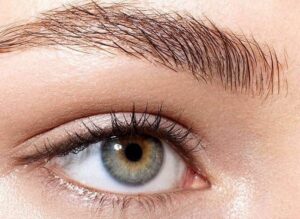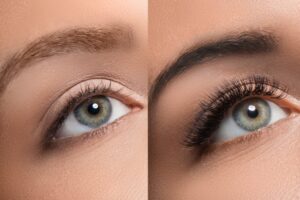Microblading
Enhancing Eyebrows with Natural Beauty and Precision

Introduction
For those looking to improve the size, fullness, and definition of their brows, microblading has grown in popularity. In contrast to conventional eyebrow tattooing, this semi-permanent makeup procedure offers a natural-looking option. We will go into the details of microblading in this post, looking at the process, advantages, aftercare, and things to think about before getting the operation.
I. Understanding Microblading
In the laborious procedure of microblading, incisions are made on the skin’s surface using a manual handheld tool and small needles. The pigment is then used to fill in these incisions, giving the illusion of individual eyebrow hairs. Microblading, as opposed to traditional tattooing, produces a more natural-looking and understated effect and gives the user precise control over shape and thickness.
II. The Microblading Process
A trained professional carefully crafts the eyebrow shape during a microblading session to complement the client’s facial characteristics and preferences. To reduce pain, the technique begins with numbing the affected area. Then, in the direction of the growth of natural hair, the technician makes short, hair-like strokes with the microblading tool. To get the required hue and depth, pigment is added to these strokes. Different hues can be layered to get a more realistic, three-dimensional image.
III. Benefits of Microblading
Microblading offers numerous advantages over other eyebrow enhancement techniques. Firstly, it provides a natural-looking result that blends seamlessly with existing eyebrow hairs. The procedure is customizable, allowing technicians to tailor the shape and thickness to complement individual facial features. Additionally, microblading is a semi-permanent solution, offering the flexibility to adapt to changing trends or personal preferences over time.
IV. Preparing for Microblading
Compared to other brow improvement methods, microblading has many benefits. First of all, the result is natural-looking and perfectly matches the existing brow hairs. Because the treatment is adaptable, specialists can adjust the thickness and form to match specific facial traits. Additionally, because microblading is a semi-permanent procedure, it allows for future trend or personal preference adaptation.
V. The Microblading Experience
The microblading session demonstrates the technician’s skill and attention to detail. Despite varying degrees of discomfort, the treatment is often bearable because numbing drugs are used. Depending on how complex the design is, the treatment could last between one and two hours. As the technician crafts painstakingly placed strokes to produce the ideal result, clients frequently find the experience to be soothing.
VI. Microblading Aftercare

For the best possible recovery and long-lasting effects, proper aftercare is essential. It’s important to follow the technician’s directions, which may include avoiding prolonged submersion in water, excessive perspiration, and exposure to direct sunlight. Using the suggested creams or ointments on the treated region will lessen scabbing and encourage healing. To avoid pigment loss throughout the healing phase, it is imperative to refrain from picking or scratching the eyebrows.
VII. Longevity and Maintenance
Results from microblading normally last between one and three years, and it is advised to schedule routine touch-up appointments to keep the desired appearance. The durability of the outcomes can vary depending on factors like skin type, lifestyle, and sun exposure. With frequent touch-ups, it is possible to adapt the shape or color to suit changing preferences.
Conclusion
A revolutionary method for getting well-defined, natural-looking eyebrows is microblading. With its fine craftsmanship and adaptable methodology






